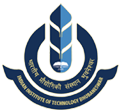- Home
- The Institute
- People
- Schools
- Academics
- Students
- Quick Links
- Admin Notifications related to COVID-19
- International Collaborations
- Link to Other IITs
- Download Forms(Establishment)
- Guest House
- Institute Seminar Series
- Institute Celebrations
- Rajbhasha Ekak
- Transportation Service
- Startup Centre
- Hostel Payment portal
- Sanjeevan Health Centre
- Endowments
- Awards
- ERP
- ERP(New)
- Current Time Table
- Central Library
- Vigilance Complaint Portal
- Cyber Security Best Practices
- Kendra Vidyalaya IIT Bbs Campus
- Campus Weather
- Admissions
- Media
Industrial Visit to Nalco Captive Power Plant
Date:-05th November 2016
Batch:- B.tech (Mechanical) 2014-18
Written by: Arun Singh Baghel (with input from batch mates)
In the swarm of thoughts that a proposal of Industrial visit evoked, there was an interesting one: when the knowledge available on our fingertips with internet and books is more comprehensive than any industrial trip can possibly provide; when work of camera available in public domain can take us closer to the working of machinery installed at such industries than what safety norms would permit, what purpose this industrial trip would really serve? I am glad that I have an answer to that self-posed question after the conclusion of trip.
Our trip was planned to National ALuminium COmpany (NALCO) Captive Power Plant at Angul, located about 150 km from our campus. The great separation ensured some very sleepy eyes making up for their lost sleep on the journey. When we reached our destination, our first interaction with NALCO official was held under an air conditioned room, filled with monitors in all direction. The schematic and data of various plant operative points were displayed in each of the monitors. While the monitors conveyed the intricacy involved in the operation, it also gave us the feeling that the plant operations could be managed with ease. I am not really sure how as a mechanical engineer, I should feel about it, but I felt proud of our human achievement.
The plant operative briefed us on the need and working principle of the plant and happily cleared all our queries with patience and enthusiasm. The peculiar observation was: all the engineers in the facilities were in really light mood, which gives us a hope of blissful career one can opt for. Let me skip the technical details about the power plant. I am pretty much sure that attempting to do that will in all probability result in efficiency of this article to be less than a coal based thermal power plant!
After the briefing session, we left the comfort of air conditioned room to visit the facility under the guidance of plant engineers. This was probably the best part of the day, it was only through our own eyes that we can truly comprehend the enormity of the mechanisms involved in the operation; dynamic structures bigger than the lifeless buildings we are accustomed to; motors and generators bigger than any us have ever seen; bolts the size of dumb bell. It is astonishing to see the diagrams that are only few centimetres wide on page of the textbook come to reality encompassing many tens of meters on the construction, and yet all this does not dwarf us. We did not feel small under those enormous structures, rather we felt big with the thoughts that perhaps one day, each of us will contribute in building something of this magnitude very soon. It feels big to relate with people who built such complex plant, to identify with themselves as “engineer”. I believe, this is the real purpose of this industrial trip and the complete experience cannot be conveyed through text or visuals on screen.
These structures are so beautiful on their own; the understanding of their underlying mechanism makes them prettier still. One can see more to appreciate more after getting equipped with the knowledge. This was done to some extent by our guides. I believe we will be able to learn and appreciate each part of the plant more and more as we learn about it in our academic endeavour. The plant at NALCO will not degrade with time, but for us it will become more beautiful every time we visit, and equip with better eyes of knowledge to see it.
With all the understanding of working of a thermal power plant that I garnered from this visit, I would like to mention the one I took about life from Mr. Satpathy at NALCO:
“…everyone in life has to make compromise and those making peace with that bitter reality of life are the only happy ones.”
I wish I could lead my life as happily as I perceive he does working as an engineer. I would consider myself to be really blessed then. The memories with the trips were many and would linger for long. We students are grateful to all those who gave us this opportunity and for the opportunities that would be coming more in future.



